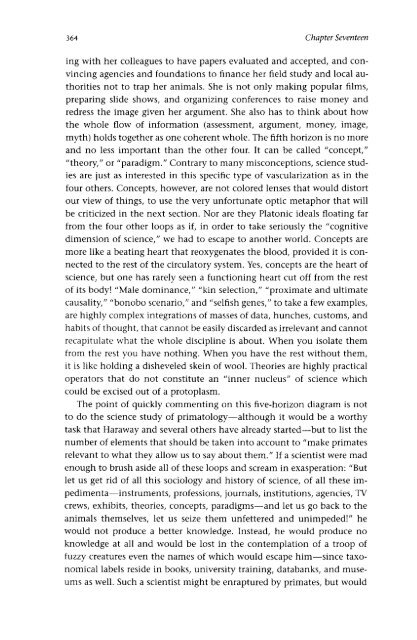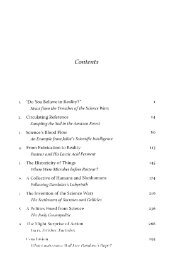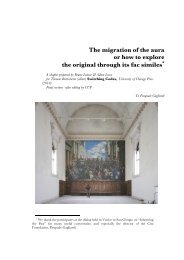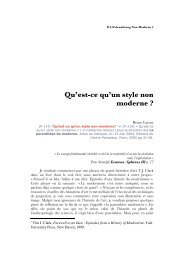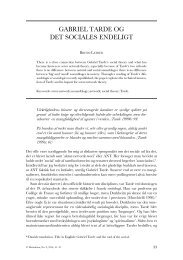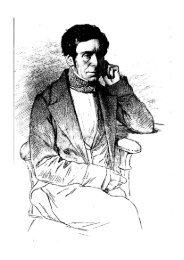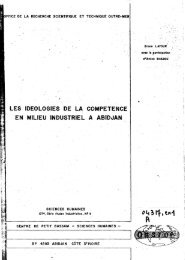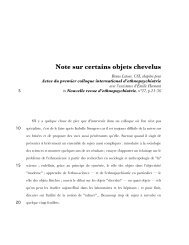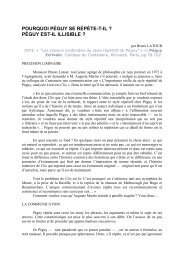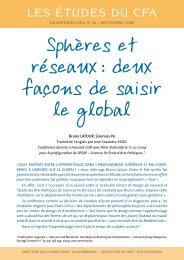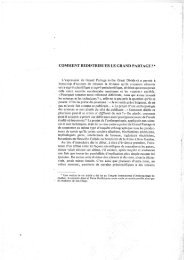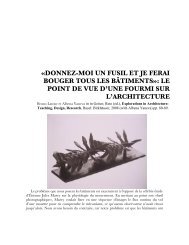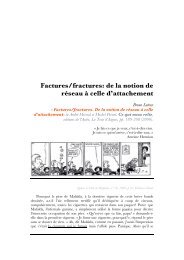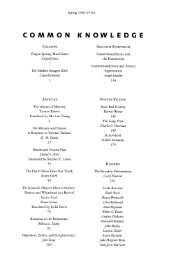A Well-Articulated Primatology - Bruno Latour
A Well-Articulated Primatology - Bruno Latour
A Well-Articulated Primatology - Bruno Latour
You also want an ePaper? Increase the reach of your titles
YUMPU automatically turns print PDFs into web optimized ePapers that Google loves.
364 Chapter Seventeen<br />
ing with her colleagues to have papers evaluated and accepted, and convincing<br />
agencies and foundations to finance her field study and local authorities<br />
not to trap her animals. She is not only making popular films,<br />
preparing slide shows, and organizing conferences to raise money and<br />
redress the image given her argument. She also has to think about how<br />
the whole flow of information (assessment, argument, money, image,<br />
myth) holds together as one coherent whole. The fifth horizon is no more<br />
and no less important than the other four. It can be called "concept,"<br />
"theory," or "paradigm." Contrary to many misconceptions, science studies<br />
are just as interested in this specific type of vascularization as in the<br />
four others. Concepts, however, are not colored lenses that would distort<br />
our view of things, to use the very unfortunate optic metaphor that will<br />
be criticized in the next section. Nor are they Platonic ideals floating far<br />
from the four other loops as if, in order to take seriously the "cognitive<br />
dimension of science," we had to escape to another world. Concepts are<br />
more like a beating heart that reoxygenates the blood, provided it is connected<br />
to the rest of the circulatory system. Yes, concepts are the heart of<br />
science, but one has rarely seen a functioning heart cut off from the rest<br />
of its body! "Male dominance," "kin selection," "proximate and ultimate<br />
causality," "bonobo scenario," and "selfish genes," to take a few examples,<br />
are highly complex integrations of masses of data, hunches, customs, and<br />
habits of thought, that cannot be easily discarded as irrelevant and cannot<br />
recapitulate vr'hat the whole discipline is about. When you isolate them<br />
from the rest vou have nothing. When you have the rest without them,<br />
it is like holding a disheveled skein of wool. Theories are highly practical<br />
operators that do not constitute an "inner nucleus" of science which<br />
could be excised out of a protoplasm.<br />
The point of quickly commenting on this five-horizon diagram is not<br />
to do the science study of primatology-although it would be a worthy<br />
task that Haraway and several others have already started-but to list the<br />
number of elements that should be taken into account to "make primates<br />
relevant to what they allow us to say about them." If a scientist were mad<br />
enough to brush aside all of these loops and scream in exasperation: "But<br />
let us get rid of all this sociology and history of science, of all these impedimenta-instruments,<br />
professions, journals, institutions, agencies, TV<br />
crews, exhibits, theories, concepts, paradigms-and let us go back to the<br />
animals themselves, let us seize them unfettered and unimpeded!" he<br />
would not produce a better knowledge. Instead, he would produce no<br />
knowledge at all and would be lost in the contemplation of a troop of<br />
fuzzy crealues even the names of which would escape him-since taxonomical<br />
labels reside in books, university training, databanks, and museums<br />
as well. Such a scientist might be enraptured by primates, but would


